Male groin diagram. Inguinal Canal Anatomy: Development, Boundaries, and Clinical Significance
What is the inguinal canal. How does it develop embryologically. What are the boundaries and contents of the inguinal canal. Why is the inguinal canal clinically important. How do inguinal hernias form.
Embryological Development of the Inguinal Canal
The inguinal canal forms during fetal development as a crucial pathway for gonadal descent. In individuals with XY chromosomes, it facilitates the migration of testes from the posterior abdominal wall to the scrotum. For those with XX chromosomes, it plays a role in ovarian positioning within the pelvis.
Key aspects of inguinal canal development include:
- The gubernaculum: A fibrous cord guiding gonadal descent
- Processus vaginalis: An outpouching of peritoneum accompanying testicular descent
- Abdominal musculature: Forms the canal’s walls
How does the gubernaculum differ between XY and XX individuals. In XY individuals, the gubernaculum guides the testes to the scrotum and becomes the scrotal ligament. In XX individuals, it attaches the ovaries to the uterus and labia majora, later forming the ovarian ligament and round ligament of the uterus.
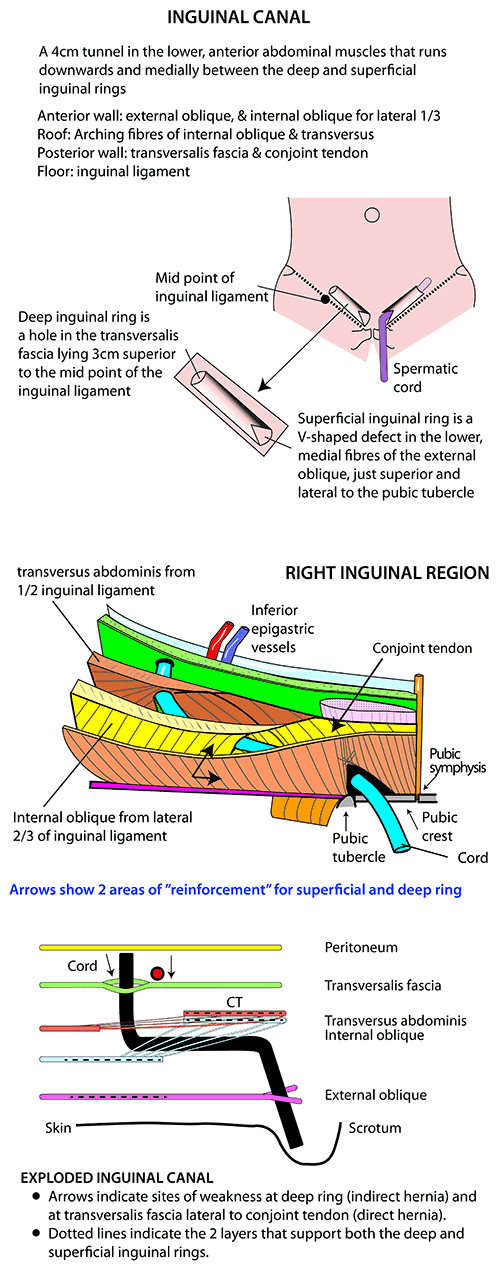
Anatomical Landmarks: Mid-Inguinal Point vs. Midpoint of Inguinal Ligament
Understanding the precise location of the inguinal canal requires familiarity with two key anatomical landmarks:
- Mid-inguinal point: Located halfway between the pubic symphysis and anterior superior iliac spine
- Midpoint of the inguinal ligament: Found halfway between the pubic tubercle and anterior superior iliac spine
Why is distinguishing between these points clinically important. The mid-inguinal point is where the femoral pulse can be palpated, while the inguinal canal’s opening is positioned just above the midpoint of the inguinal ligament. This distinction is crucial for accurate physical examinations and surgical planning.
Boundaries and Walls of the Inguinal Canal
The inguinal canal is a complex three-dimensional structure with well-defined boundaries:
Walls:
- Anterior: Formed by the external oblique aponeurosis, reinforced laterally by the internal oblique muscle
- Posterior: Comprised of the transversalis fascia
- Superior (roof): A combination of transversalis fascia, internal oblique, and transversus abdominis muscles
- Inferior (floor): The inguinal ligament, thickened medially by the lacunar ligament
How do these walls protect against herniation. During increased intra-abdominal pressure, the anterior and posterior wall muscles contract, effectively “clamping down” on the canal to prevent visceral protrusion.

Inguinal Canal Openings: Deep and Superficial Rings
The inguinal canal has two openings, known as rings:
Deep (Internal) Ring:
- Marks the internal opening of the inguinal canal
- Located above the midpoint of the inguinal ligament
- Formed by an invagination of the transversalis fascia
Superficial (External) Ring:
- Represents the external opening of the inguinal canal
- Found superior and lateral to the pubic tubercle
- Formed by splitting of the external oblique aponeurosis
Why is the relationship between these rings important. The orientation and distance between the deep and superficial rings influence the path of structures passing through the canal and can affect the development of inguinal hernias.
Contents of the Inguinal Canal
The inguinal canal serves as a conduit for several important structures:
In males:
- Spermatic cord (containing vas deferens, testicular artery and vein, lymphatics)
- Genital branch of the genitofemoral nerve
- Cremasteric artery and vein
In females:
- Round ligament of the uterus
- Genital branch of the genitofemoral nerve
- Artery to the round ligament
How does the content of the inguinal canal differ between males and females. The primary distinction lies in the presence of the spermatic cord in males versus the round ligament of the uterus in females, reflecting their different reproductive anatomies.
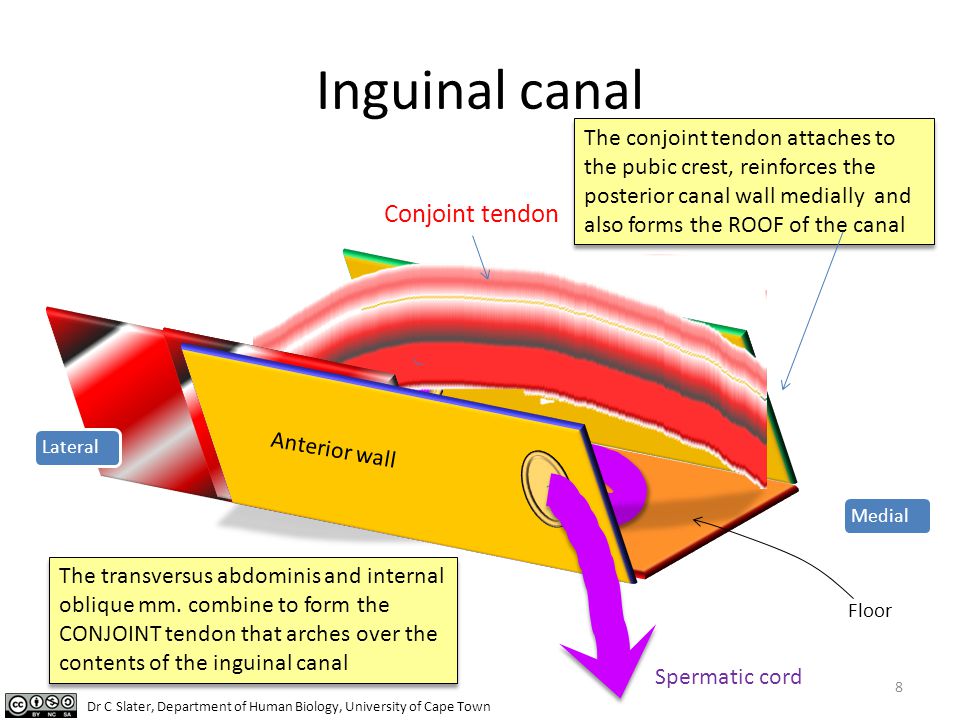
Clinical Relevance: Inguinal Hernias
The inguinal canal’s structure makes it a potential weak point in the abdominal wall, predisposing it to herniation. Inguinal hernias are a common clinical concern, with two primary types:
Indirect Inguinal Hernia:
- Occurs when abdominal contents protrude through the deep inguinal ring
- Often associated with congenital persistence of the processus vaginalis
- More common in males and can extend into the scrotum
Direct Inguinal Hernia:
- Results from weakening of the posterior wall of the inguinal canal
- Protrudes directly through the inguinal triangle (Hesselbach’s triangle)
- More common in older individuals due to weakening of abdominal muscles
What distinguishes indirect from direct inguinal hernias. Indirect hernias pass through the deep inguinal ring and follow the inguinal canal, while direct hernias protrude through a weakened posterior wall, medial to the inferior epigastric vessels.
Diagnostic Approaches for Inguinal Hernias
Accurate diagnosis of inguinal hernias is crucial for appropriate management. Several techniques aid in distinguishing between direct and indirect hernias:

Physical Examination:
- Inspection and palpation of the groin area
- Assessing for bulges or protrusions, especially during Valsalva maneuver
- Evaluation of the scrotal contents in males
Imaging Studies:
- Ultrasound: Non-invasive and can visualize dynamic movement of hernial contents
- CT scan: Provides detailed anatomical information, useful for complex cases
- MRI: Offers excellent soft tissue contrast, beneficial for assessing muscular defects
How can the “cough impulse” test aid in hernia diagnosis. This test involves placing a finger over the inguinal canal and asking the patient to cough. A palpable impulse against the finger suggests a hernia, with the location of the impulse helping to differentiate between direct and indirect types.
Surgical Management of Inguinal Hernias
Inguinal hernia repair is one of the most common surgical procedures performed worldwide. The choice of technique depends on various factors, including hernia type, size, and patient characteristics.
Open Repair Techniques:
- Lichtenstein tension-free repair: Uses mesh to reinforce the inguinal canal
- Shouldice repair: Employs a multi-layer tissue repair without mesh
- Bassini repair: An older technique involving suturing of the transversus abdominis arch to the inguinal ligament
Laparoscopic Approaches:
- Totally extraperitoneal (TEP) repair: Performed without entering the peritoneal cavity
- Transabdominal preperitoneal (TAPP) repair: Involves entering the peritoneal cavity to place mesh
What are the advantages of laparoscopic hernia repair? Laparoscopic techniques often result in less postoperative pain, faster recovery, and lower risk of chronic pain. However, they require specialized skills and may not be suitable for all patients or hernia types.

Complications and Long-term Outcomes of Inguinal Hernia Repair
While inguinal hernia repair is generally safe and effective, understanding potential complications and long-term outcomes is crucial for patient care and surgical decision-making.
Potential Complications:
- Seroma formation: Accumulation of fluid in the surgical site
- Hematoma: Collection of blood in the operative area
- Wound infection: More common in open repairs
- Mesh-related complications: Infection, migration, or erosion
- Chronic pain: Persistent discomfort lasting beyond the normal healing period
- Recurrence: Reappearance of the hernia after repair
Long-term Outcomes:
- Recurrence rates: Generally low, ranging from 1-5% depending on technique and follow-up duration
- Quality of life: Most patients report significant improvement in symptoms and daily activities
- Return to work: Typically faster with laparoscopic approaches
- Sexual function: May be temporarily affected but usually returns to baseline
How can surgeons minimize the risk of chronic postoperative pain? Careful tissue handling, identification and preservation of nerves, appropriate mesh selection and fixation, and tension-free repair techniques can help reduce the incidence of chronic pain after inguinal hernia surgery.
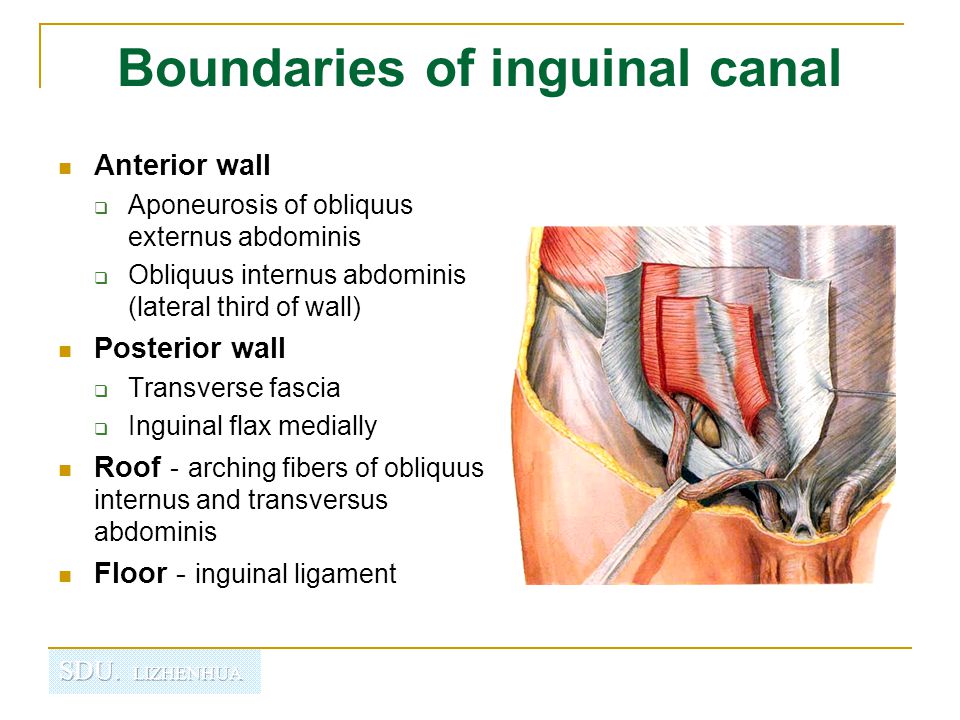
Anatomical Variations and Their Clinical Implications
Understanding anatomical variations in the inguinal region is crucial for surgeons and clinicians to avoid complications and ensure optimal patient outcomes.
Common Variations:
- Variations in the course of the ilioinguinal and iliohypogastric nerves
- Presence of aberrant obturator vessels (“corona mortis”)
- Variations in the attachment of the inguinal ligament
- Presence of a femoral hernia sac alongside an inguinal hernia
Clinical Implications:
- Increased risk of nerve injury during surgery if variations are not recognized
- Potential for unexpected bleeding if aberrant vessels are encountered
- Misdiagnosis or incomplete repair if multiple hernias are present
How do anatomical variations impact surgical planning? Surgeons must be prepared to encounter and adapt to these variations during hernia repair. Preoperative imaging and careful intraoperative dissection are key to identifying and managing anatomical variations safely.
Future Directions in Inguinal Hernia Management
The field of inguinal hernia management continues to evolve, with ongoing research and technological advancements shaping future approaches.

Emerging Trends:
- Robotic-assisted hernia repair: Offering enhanced precision and visualization
- Bioengineered mesh materials: Aiming to reduce foreign body reactions and improve integration
- Tailored approaches: Personalizing surgical techniques based on patient factors and hernia characteristics
- Non-surgical management: Exploring conservative options for select patient populations
Research Focus Areas:
- Long-term outcomes of different repair techniques
- Prevention strategies for hernia development
- Optimization of pain management protocols
- Role of genetics in hernia formation and recurrence
How might advances in tissue engineering impact inguinal hernia repair? Bioengineered scaffolds and growth factors could potentially enhance tissue regeneration and strengthen the abdominal wall, reducing recurrence rates and improving long-term outcomes.
The inguinal canal, with its complex anatomy and clinical significance, remains a focal point of surgical interest and innovation. As our understanding of its structure, function, and pathologies continues to grow, so too does our ability to provide effective, personalized care for patients with inguinal hernias. From embryological development to cutting-edge surgical techniques, the study of the inguinal canal exemplifies the intricate interplay between anatomy, pathology, and clinical practice in modern medicine.

The Inguinal Canal – Boundaries – Contents
star
star
star
star
star
based on 525 ratings
Original Author(s): Oliver Jones
Last updated: September 26, 2022
Revisions: 46
Original Author(s): Oliver Jones
Last updated: September 26, 2022
Revisions: 46
format_list_bulletedContents
add
remove
- 1 Development of the Inguinal Canal
- 2 Mid-Inguinal Point and Midpoint of the Inguinal Ligament
- 3 Boundaries
- 3.1 Walls
- 3.2 Rings
- 4 Contents
- 5 Clinical Relevance: Inguinal Hernia
- 5.1 Indirect Inguinal Hernia
- 5.2 Direct Inguinal Hernia
- 6 Prosection Images
The inguinal canal is a short passage that extends inferiorly and medially through the inferior part of the abdominal wall. It is superior and parallel to the inguinal ligament.
It is superior and parallel to the inguinal ligament.
The canal serves as a pathway by which structures can pass from the abdominal wall to the external genitalia. It is of clinical importance as a potential weakness in the abdominal wall, and thus a common site of herniation.
In this article, we shall look at the anatomy of the inguinal canal – its development, borders and contents.
By TeachMeSeries Ltd (2023)
Fig 1 – Overview of the inguinal canal. Clinically it is important to note that the opening to the inguinal canal is located laterally to the inferior epigastric artery.
Development of the Inguinal Canal
During development, the tissue that will become gonads (either testes or ovaries) establish in the posterior abdominal wall, and descend through the abdominal cavity. A fibrous cord of tissue called the gubernaculum attaches the inferior portion of the gonad to the future scrotum or labia, and guides them during their descent.
The inguinal canal is the pathway by which the testes (in an individual with an XY karyotype) leave the abdominal cavity and enter the scrotum. In the embryological stage, the canal is flanked by an out-pocketing of the peritoneum (processus vaginalis) and the abdominal musculature.
The processus vaginalis normally degenerates, but a failure to do so can cause an indirect inguinal hernia, a hydrocele, or interfere with the descent of the testes. The gubernaculum (once it has shortened in the process of the descent of the testes) becomes a small scrotal ligament, tethering the testes to the scrotum and limiting their movement.
Individuals with an XX karyotype also have a gubernaculum, which attaches the ovaries to the uterus and future labia majora. Because the ovaries are attached to the uterus by the gubernaculum, they are prevented from descending as far as the testes, instead moving into the pelvic cavity. The gubernaculum then becomes two structures in the adult: the ovarian ligament and round ligament of uterus
The gubernaculum then becomes two structures in the adult: the ovarian ligament and round ligament of uterus
By TeachMeSeries Ltd (2023)
Fig 2 – The descent and embryological development of the testes. Note that the processus vaginalis normally regresses after the descent of the testes
Mid-Inguinal Point and Midpoint of the Inguinal Ligament
These two terms are mentioned frequently in this article, and are often (mistakenly) used interchangeably:
- Mid-inguinal point – halfway between the pubic symphysis and the anterior superior iliac spine. The femoral pulse can be palpated here.
- Midpoint of the inguinal ligament – halfway between the pubic tubercle and the anterior superior iliac spine (the two attachments of the inguinal ligament). The opening to the inguinal canal is located just above this point.
By TeachMeSeries Ltd (2023)
Fig 3 – Coronal view of the pelvis, demonstrating the mid-inguinal point and the midpoint of the inguinal ligament
Boundaries
The inguinal canal is bordered by anterior, posterior, superior (roof) and inferior (floor) walls. It has two openings – the superficial and deep rings.
It has two openings – the superficial and deep rings.
Walls
- Anterior wall – aponeurosis of the external oblique, reinforced by the internal oblique muscle laterally.
- Posterior wall – transversalis fascia.
- Roof – transversalis fascia, internal oblique, and transversus abdominis.
- Floor – inguinal ligament (a ‘rolled up’ portion of the external oblique aponeurosis), thickened medially by the lacunar ligament.
During periods of increased intra-abdominal pressure, the abdominal viscera are pushed into the posterior wall of the inguinal canal. To prevent herniation of viscera into the canal, the muscles of the anterior and posterior wall contract, and ‘clamp down’ on the canal.
By TeachMeSeries Ltd (2023)
Fig 4 – The borders of the inguinal canal. The anterior wall of the left inguinal canal has been removed.
DARTMOUTH MEDICAL SCHOOL
Fig 5 – Sagittal view of the inguinal canal, showing the borders.
Rings
The two openings to the inguinal canal are known as rings. There are two rings – deep (internal) and superficial (external):
- Deep (internal) ring:
- Marks the internal opening of the inguinal canal
- Found above the midpoint of the inguinal ligament (lateral to the epigastric vessels).
- The ring is created by the transversalis fascia, which invaginates to form a covering of the contents of the inguinal canal.
- Superficial (external) ring:
- Marks the external end of the inguinal canal
- Lies just superior to the pubic tubercle.
- It is a triangle shaped opening, formed by the invagination of the external oblique, which forms another covering of the inguinal canal contents.
- It contains intercrural fibres, which run perpendicular to the aponeurosis of the external oblique and prevent the ring from widening.
Contents
The contents of the inguinal canal include:
- Spermatic cord (biological males only) – contains neurovascular and reproductive structures that supply and drain the testes.
 See here for more information.
See here for more information. - Round ligament (biological females only) – originates from the uterine horn and travels through the inguinal canal to attach at the labia majora.
- Ilioinguinal nerve – contributes towards the sensory innervation of the genitalia
- Note: only travels through part of the inguinal canal, exiting via the superficial inguinal ring (it does not pass through the deep inguinal ring)
- This is the nerve most at risk of damage during an inguinal hernia repair.
- Genital branch of the genitofemoral nerve – supplies the cremaster muscle and anterior scrotal skin in males, and the skin of the mons pubis and labia majora in females.
The walls of the inguinal canal are usually collapsed around their contents, preventing other structures from potentially entering the canal and becoming stuck.
Clinical Relevance: Inguinal Hernia
A hernia is defined as the protrusion of an organ or fascia through the wall of a cavity that normally contains it.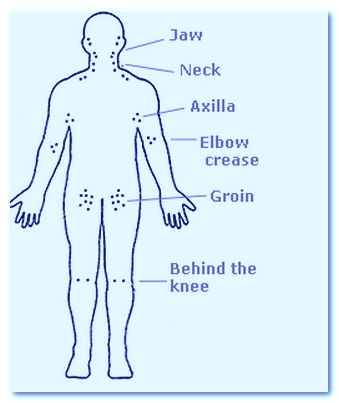 Hernias involving the inguinal canal can be divided into two main categories:
Hernias involving the inguinal canal can be divided into two main categories:
- Indirect – where the peritoneal sac enters the inguinal canal through the deep inguinal ring.
- Direct – where the peritoneal sac enters the inguinal canal though the posterior wall of the inguinal canal.
Both types of inguinal hernia can present as lumps in the scrotum or labia majora.
Indirect Inguinal Hernia
Indirect inguinal hernias are the more common of the two types. They are caused by the failure of the processus vaginalis to regress.
The peritoneal sac (and potentially loops of bowel) enters the inguinal canal via the deep inguinal ring. The degree to which the sac herniates depends on the amount of processus vaginalis still present.
Large herniations are possible in which the peritoneal sac and its contents may traverse the entire inguinal canal, emerge through the superficial inguinal ring, and reach the scrotum.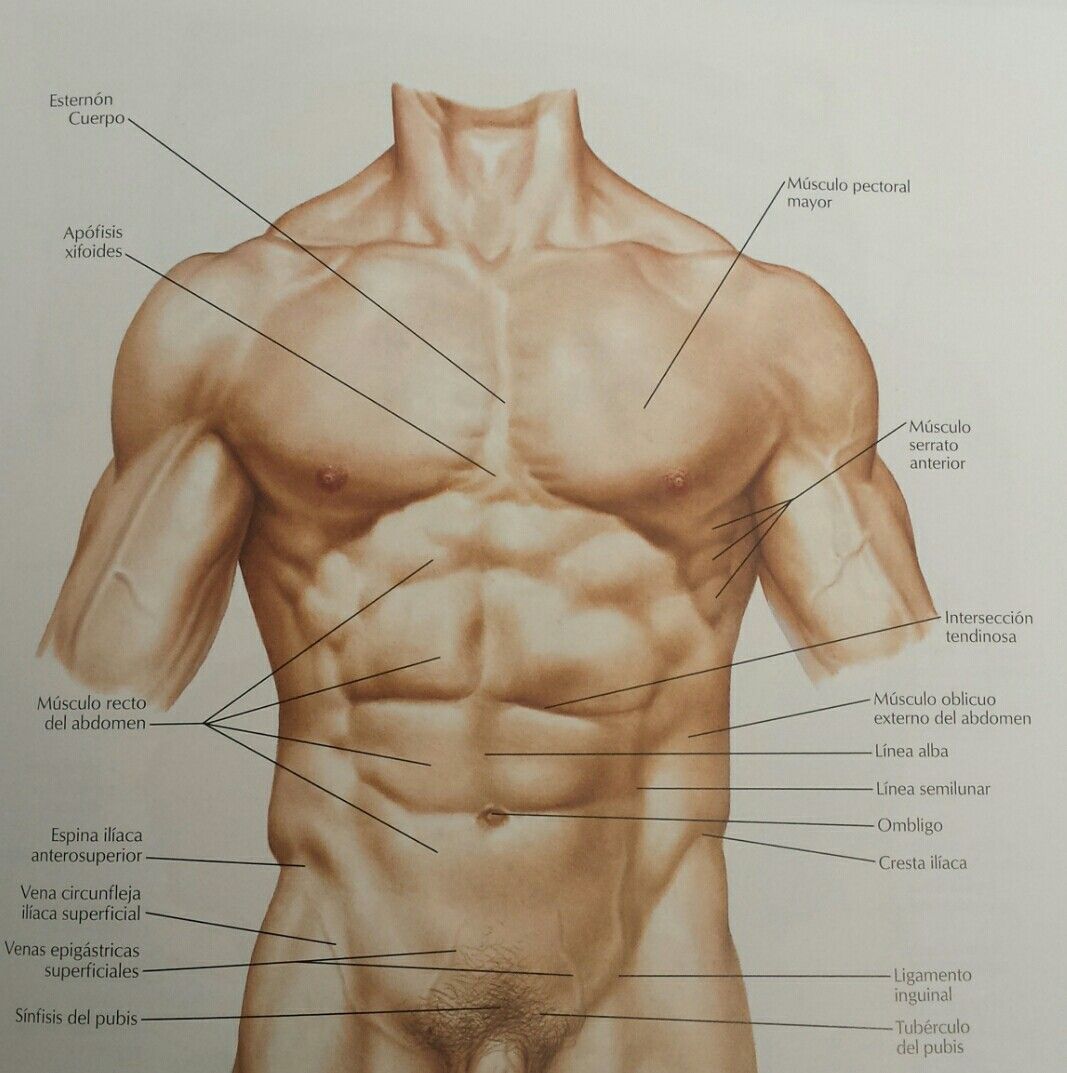
Direct Inguinal Hernia
In contrast to the indirect hernia, direct inguinal hernias are acquired, usually in adulthood, due to weakening in the abdominal musculature.
The peritoneal sac bulges into the inguinal canal via the posterior wall medial to the epigastric vessels and can enter the superficial inguinal ring. The sac is not covered with the coverings of the contents of the canal.
DARTMOUTH MEDICAL SCHOOL
Fig 6 – Transverse view of the inferior abdominal cavity. Compares normal anatomy with indirect and direct herniation.
Prosection Images
Suárez-Quian & Vilensky. All in One Anatomy Review – Volume 3: The Abdomen
Prosection 1 – The superficial inguinal ring and contents of the inguinal canal.
Suárez-Quian & Vilensky. All in One Anatomy Review – Volume 3: The Abdomen
Prosection 2 – The spermatic cord and inguinal canal.
printPrint this Article
The Spermatic Cord – Course – Fascia – Contents
- 1 Anatomical Course
- 2 Fascial Coverings
- 3 Contents
- 3.
 1 Pampiniform Plexus
1 Pampiniform Plexus - 3.2 Vas Deferens
- 3.
- 4 Clinical Relevance: Testicular Torsion
The spermatic cord refers to a collection of vessels, nerves and ducts that run to and from the testes. They are surrounded by fascia, forming a cord-like structure.
This article will look at the anatomy of the spermatic cord – its anatomical course, contents, and clinical correlations.
Anatomical Course
The anatomical course of the spermatic cord is relatively short, beginning in the inferior abdomen and ending in the scrotum.
The spermatic cord is formed at the opening of the inguinal canal, known as the deep inguinal ring. This opening is located laterally to the inferior epigastric vessels.
The cord passes through the inguinal canal, entering the scrotum via the superficial inguinal ring. It continues into the scrotum, ending at the posterior border of the testes.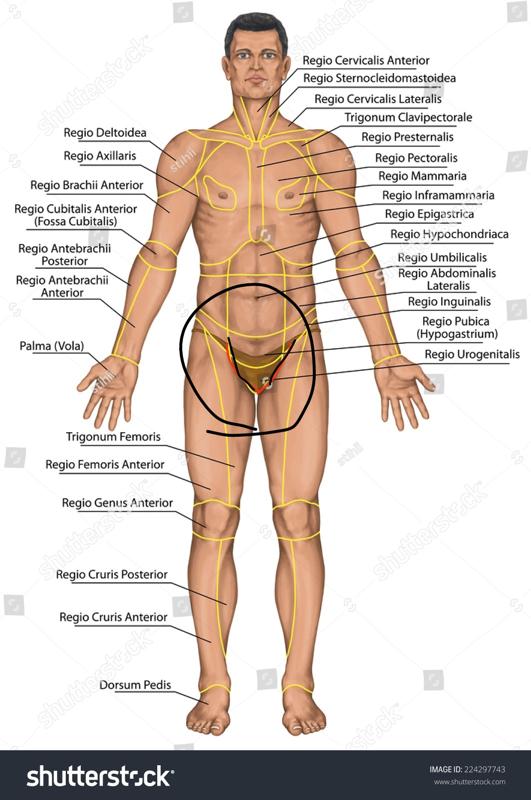 Here, its contents disperse to supply the various structures of the testes and scrotum.
Here, its contents disperse to supply the various structures of the testes and scrotum.
By TeachMeSeries Ltd (2023)
Fig 1 – Anatomical course of the spermatic cord.
Fascial Coverings
The contents of the spermatic cord are mainly bound together by three fascial layers. They are all derived from anterior abdominal wall:
- External spermatic fascia – derived from the aponeurosis of the external oblique muscle.
- Cremaster muscle and fascia – derived from the internal oblique muscle.
- Internal spermatic fascia – derived from the transversalis fascia.
The three fascial layers themselves are covered by a layer of superficial fascia, which lies directly below the scrotal skin.
The cremaster muscle forms the middle layer of the spermatic cord fascia. It is a discontinuous layer of striated muscle that is orientated longitudinally.
By TeachMeSeries Ltd (2023)
Fig 2 – The cremaster muscle. Note the looping structure.
Note the looping structure.
The cremasteric reflex can be stimulated by stroking the superior and medial part of the thigh. This produces an immediate contraction of the cremaster muscle, elevating the testis on the side that has been stimulated.
This spinal reflex consists of two parts:
- Afferent (sensory) limb – ilioinguinal nerve (innervates the skin of the superomedial thigh). Fibres from this nerve enter the spinal cord at L1.
- Efferent (motor) limb – genital branch of the genitofemoral nerve (innervates the cremaster muscle).
Contents
The spermatic cord conveys several important structures that run to and from the testis.
Pampiniform Plexus
The pampiniform plexus is a network of veins, responsible for the venous drainage of the testes. It has a unique configuration, wrapping itself around the testicular artery
The testes function best at a temperature just below that of the body. The pampiniform plexus acts as a heat exchanger, cooling the arterial blood before it reaches the testes. As it travels through the inguinal canal, the pampiniform plexus condenses into a single testicular vein.
The pampiniform plexus acts as a heat exchanger, cooling the arterial blood before it reaches the testes. As it travels through the inguinal canal, the pampiniform plexus condenses into a single testicular vein.
The right testicular vein drains into the inferior vena cava and the left testicular vein drains into the left renal vein. However, there are also some anastomotic branches that allow communication with other veins, such as the cremasteric, scrotal and internal pudendal veins.
Vas Deferens
The vas deferens is a straight, thick muscular tube that conveys sperm from the epididymis to the ampulla and eventually, to the ejaculatory duct (formed by the convergence of the vas deferens and seminal vesicle duct). From the ejaculatory duct, sperm can pass through to the prostatic urethra.
The wall of the vas deferens consists largely of smooth muscle, arranged in three muscle layers:
| Inner Layer | Intermediate Layer | Outer Layer |
|
|
|
There is a rich autonomic innervation of these muscle fibres, which permits fast movement of sperm towards the ejaculatory duct. This movement is also facilitated by the inner mucosal layer of the vas deferens – which is lined by cells that possess microvilli. Their seaweed-like movement helps advance spermatozoa through the spermatic tube.
This movement is also facilitated by the inner mucosal layer of the vas deferens – which is lined by cells that possess microvilli. Their seaweed-like movement helps advance spermatozoa through the spermatic tube.
The anatomical course of the vas deferens is as follows:
- It is continuous with the tail of the epididymis.
- Travels through the inguinal canal, as part of the spermatic cord.
- Moves down the lateral pelvic wall close to the ischial spine.
- Turns medially to pass between the bladder and the ureter and then travels downward on the posterior surface of the bladder.
- The inferior narrow part of the ampulla joins the duct from the seminal vesicle to form the ejaculatory duct.
By TeachMeSeries Ltd (2023)
Fig 4 – Anatomical course of the vas deferens.
Clinical Relevance: Testicular Torsion
Testicular torsion is a surgical emergency, where the spermatic cord twists upon itself. This can lead to strangulation of the testicular artery, resulting in necrosis of the testis.
This can lead to strangulation of the testicular artery, resulting in necrosis of the testis.
A common cause of testicular torsion is spasm of the cremasteric muscle fibres which then force the testicle to spin around its own cord. Certain anatomic conditions (e.g. a loose testicle in a large peritoneal sac – tunica vaginalis) may facilitate this movement.
Diagnosis can be confirmed via ultrasound and colour doppler scanning. The main clinical feature of testicular torsion is severe, sudden pain in the affected testis which usually lies higher (due to the torsion of the cord) in the scrotum.
Testicular torsion is an absolute surgical emergency. A few hours delay can lead to testicular necrosis.
Kostis Gyftopoulos MD, PhD
Fig 5 – Testicular necrosis, as a result of testicular torsion.
printPrint this Article
Anatomical structure of the male reproductive organs
Organs of the genitourinary system
The term “genitourinary” explains that this system consists of two components: urinary and genital. The combination of these two subsystems into one indicates a close relationship between the organs of this system, and in the male body this relationship is more closely manifested than in the female, since the male urethra (urethra) performs a dual function: urine excretion and ejaculation. Therefore, the urologist deals with the pathology of the male genitourinary system and the female urinary system.
The combination of these two subsystems into one indicates a close relationship between the organs of this system, and in the male body this relationship is more closely manifested than in the female, since the male urethra (urethra) performs a dual function: urine excretion and ejaculation. Therefore, the urologist deals with the pathology of the male genitourinary system and the female urinary system.
The urinary system includes: kidneys, ureters, bladder, urethra. Kidneys In their shape, the kidneys resemble beans (or beans). The average size of the kidneys in an adult is 10 x 6 cm. The right kidney is usually located slightly lower than the left, since it is located under the liver. The kidneys are surrounded by fatty tissue, which, along with the surrounding muscles and ligaments, hold them in place. This explains why in thin people, as well as due to sudden weight loss, a disease such as nephroptosis can occur – omission of the kidney.
Kidneys consist of two layers. Superficial – cortical, and deeper – cerebral. On the section of the kidney, you can see the medulla is a system of tubules (tubules). The function of the tubules is to collect and divert urine into the pelvis. The pelvis is a combined collector of all tubules of the kidney. It opens into the gate of the kidney, in which, in addition to the pelvis, there is also an artery and a vein.
Superficial – cortical, and deeper – cerebral. On the section of the kidney, you can see the medulla is a system of tubules (tubules). The function of the tubules is to collect and divert urine into the pelvis. The pelvis is a combined collector of all tubules of the kidney. It opens into the gate of the kidney, in which, in addition to the pelvis, there is also an artery and a vein.
The basic unit of the kidney is the nephron. This is such a glomerulus, it consists of the very initial “cup-shaped” end of the tubule, which is entangled with capillaries, through which blood continuously circulates. Due to blood pressure and the membrane properties of the capillary walls, plasma is filtered from the blood into the glomerulus – that is, the liquid part of the blood without erythrocytes, leukocytes and other blood cells, which, normally, do not pass through the membrane, as well as some substances (sugar, protein, etc.) But in certain diseases, these blood components are filtered through the glomerular membrane and are found in the urine.
So, the main function of the kidneys is to “filter” the blood. The kidneys are the main organ that cleanses the blood of all toxins and metabolic products. When they become ill, this filtering function is disturbed, which leads to accumulation in the blood and poisoning of the body with its own metabolic products. It is worth noting that some drugs and their metabolic products are excreted from the body through the kidneys.
Ureters
The ureters are a downward extension of the pelvis and are a tube about 30 cm long. The lumen of the ureter is 5-6 mm. But this width is not constant and the lumen of the ureter narrows in three places – the so-called physiological narrowing. The significance of these narrowings lies in the fact that small kidney stones can get stuck in them. The ureters empty into the bladder.
Bladder
The bladder is an extensible reservoir, the wall of which contains a muscular layer and is lined with a mucous membrane from the inside. The ureters flow into the bladder. The average bladder capacity is 300 to 600 ml.
The ureters flow into the bladder. The average bladder capacity is 300 to 600 ml.
Urethra (urethra)
The urethra is a hollow tube that carries urine out of the bladder. The urethra in men and women is different: in men it is long and narrow (30 cm long, about 8 mm wide), while in women it is short and wide (3-4 cm long, 1-1.5 cm wide). These structural features of the urethra in women are the main reason that they often develop inflammatory diseases of the bladder – cystitis, since the infection easily enters the bladder through the short female urethra. The lumen of the urethra is covered with a mucous membrane. Inflammation of this membrane – urethritis – occurs as a result of infection, both non-specific (conditionally pathogenic) and specific (gonorrhea, chlamydia, trichomoniasis, etc.).
Reproductive system. Male reproductive organs
Male internal genital organs
- Deferent ducts
- spermatic cords
- Seminal vesicles
- Prostate
- Bulbourethral gland
Male external genitalia
- Male urethra
- Scrotum
- Testicles
- Peritoneum of the pelvic cavity
Prostate (prostate gland)
The prostate is located directly under the bladder at its neck and covers the urethra, i.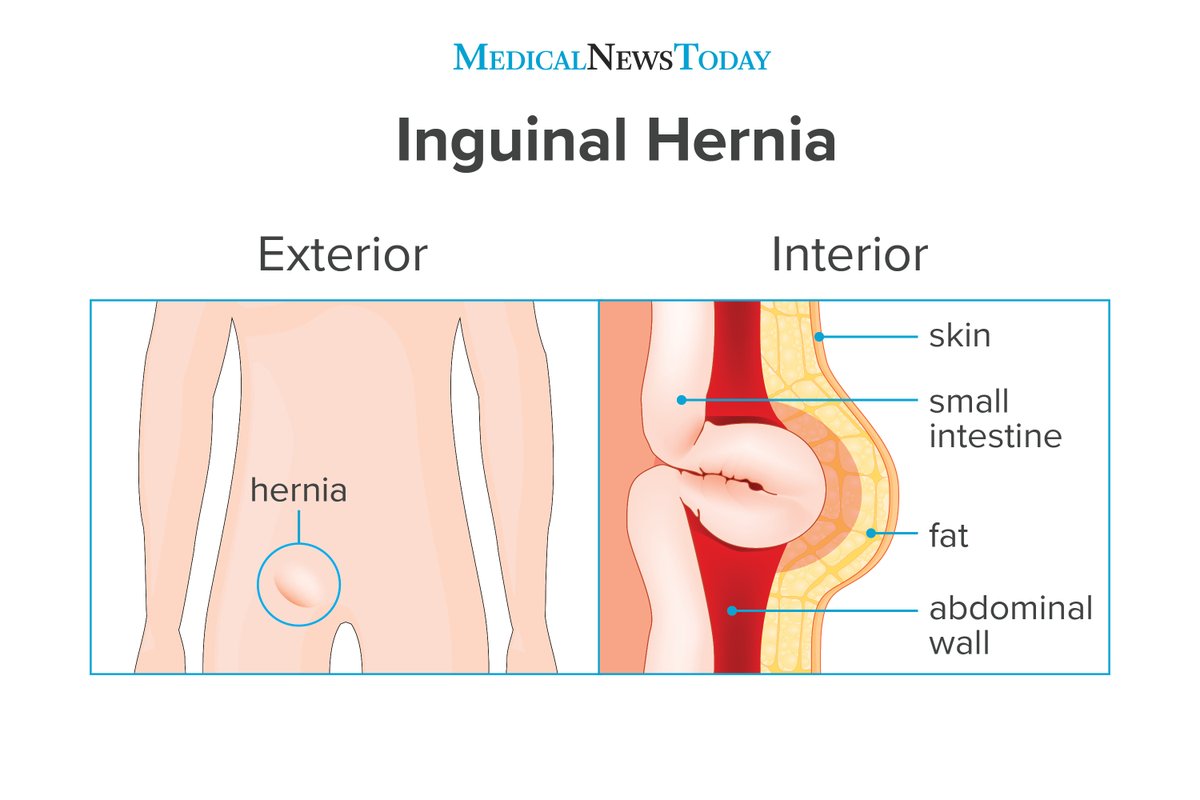 e. the urethra passes through it. This is the so-called prostatic urethra. Both the ducts of the prostate and the ducts of the seminal vesicles open into it. The prostate is a glandular organ, meaning most of its tissue is glandular. In shape and size, the prostate resembles a chestnut.
e. the urethra passes through it. This is the so-called prostatic urethra. Both the ducts of the prostate and the ducts of the seminal vesicles open into it. The prostate is a glandular organ, meaning most of its tissue is glandular. In shape and size, the prostate resembles a chestnut.
The main function of the prostate is the production of a special transparent liquid – prostatic secretion (prostate juice), which is part of the semen. The composition of sperm is quite complex. Sperm is a mixture of secretions from a number of glands. In particular, in addition to spermatozoa, semen contains secretions of the prostate gland, seminal vesicles and glands of Littre and Cooper.
The secretions of the prostate gland attached to the seed have an alkaline reaction and an opalescent appearance, contain licitous grains, prostatic bodies, epithelial, granular cells and spermine, which gives the seed a translucent milky appearance and a specific smell. The discharge of the seminal vesicles is odorless, sticky, colorless, consists of epithelial cells, single leukocytes and formations similar to sago grains.
Secrets of the prostate and seminal vesicles liquefy thick semen, ensure the viability of spermatozoa and give them the necessary mobility.
Sperm has the appearance of a cloudy, gelatinous, stretchy liquid, and the white color is due to the presence of spermatozoa in it. The secretion of the testicles consists of spermatozoa and phosphate crystals.
Seminal vesicles
Seminal vesicles are peculiar convoluted sacs along the posterolateral surface of the bladder. The main function of the seminal vesicles is a reservoir of seminal fluid. In the seminal vesicles, the seminal fluid also undergoes some changes in order to become a full-fledged sperm. During sexual intercourse, during ejaculation, seminal fluid is ejected from the seminal vesicles through the ducts into the urethra, and, mixing with the juice of the prostate and the secret of other glands, is ejected through the external opening of the urethra.
The vas deferens
The vas deferens are thin tubes that lead from the testicles and empty into the seminal vesicles. Through them, the seminal fluid from the testicles enters the seminal vesicles.
Through them, the seminal fluid from the testicles enters the seminal vesicles.
Testicles
The testicles are a paired organ. They are located in the scrotum. In them, the formation and maturation of spermatozoa occurs. In addition, the testicles are the main organ in which the main male sex hormone, testosterone, is produced. It should be noted such an interesting fact that usually the left testicle is located slightly lower than the right one.
As already noted, the main function of the testicles is the production of spermatozoa. Spermatozoa are produced in them by special cells – Sertolli cells. In addition to these cells, there are also Leydig cells in the testicles, these are hormone-active cells that produce testosterone.
Each testicle consists of lobules filled with convoluted seminiferous tubules. On top of each testicle is an appendage that passes into the vas deferens. The functions of the testis are under the control of the anterior pituitary gland. It is worth noting the fact that such an arrangement of the testicles – the main, from the point of view of reproduction, genital organs – is associated with a special temperature regime, which is necessary for the maturation of spermatozoa in them. Those. for normal maturation of spermatozoa, a temperature of several degrees below body temperature is required. Therefore, such an important organ, from the point of view of storing and transmitting the genetic information of a species, is located in a not very reliable place – outside. However, many animals have a muscle that, in case of danger, raises the testicle and draws it into the abdominal cavity. In humans, it is underdeveloped.
It is worth noting the fact that such an arrangement of the testicles – the main, from the point of view of reproduction, genital organs – is associated with a special temperature regime, which is necessary for the maturation of spermatozoa in them. Those. for normal maturation of spermatozoa, a temperature of several degrees below body temperature is required. Therefore, such an important organ, from the point of view of storing and transmitting the genetic information of a species, is located in a not very reliable place – outside. However, many animals have a muscle that, in case of danger, raises the testicle and draws it into the abdominal cavity. In humans, it is underdeveloped.
Each testicle is covered with membranes in its half of the scrotum. There are seven in total. Sometimes, in case of accumulation between the layers of the testicles, dropsy (hydrocele) occurs.
Penis
The male penis is used for sexual intercourse and makes fertilization possible, as well as in the thickness of his spongy body passes the urethra, through which urine or semen is excreted. Those. the penis has a dual function: urination and procreation. The penis has a complex structure. In the upper part of it there are two cavernous bodies, and under them – a spongy body. The cavernous bodies are covered with a connective tissue protein membrane.
Those. the penis has a dual function: urination and procreation. The penis has a complex structure. In the upper part of it there are two cavernous bodies, and under them – a spongy body. The cavernous bodies are covered with a connective tissue protein membrane.
Cavernous bodies got their name for their special cellular structure, which looks like a cave. Such a structure is necessary to ensure an erection and sexual intercourse. Studies show that an erection occurs as a result of the expansion of the arteries that bring blood to the penis, the spasm of the veins through which this blood departs from the penis, and the relaxation of the cells of the cavernous bodies of the penis. Arteries, veins and cells of the corpora cavernosa are composed of smooth muscles. These muscles are affected by the so-called neurotransmitters – substances that are released during stimulation of the nerves that control the erection process.
After appropriate sexual stimulation, these substances lead to relaxation (relaxation) of the smooth muscles of the cavernous bodies of the penis, expansion of their arterial cells, which is manifested by a powerful increase in blood flow to the penis. Then the cells fill with blood, expand and compress the veins through which the blood drains, which leads to a further increase in intracavernous pressure, thereby causing an erection.
Then the cells fill with blood, expand and compress the veins through which the blood drains, which leads to a further increase in intracavernous pressure, thereby causing an erection.
Make an appointment
Anatomy and physiology of the male genitourinary system
- 2.86
- 1
- 2
- 3
- 4
- 5
2.86/5
Voted: 352
50
6000
UAH
Men’s epilation of intimate areas: deep bikini, description of the procedure, men’s epilation of intimate areas in Moscow
Home > Men’s epilation of intimate areas
Sign up for epilation
Get a discount
In recent years, such a treatment as men’s epilation of intimate areas is gaining popularity. The stronger sex, as well as women, today take care of their skin and strive to look elegant and aesthetically pleasing.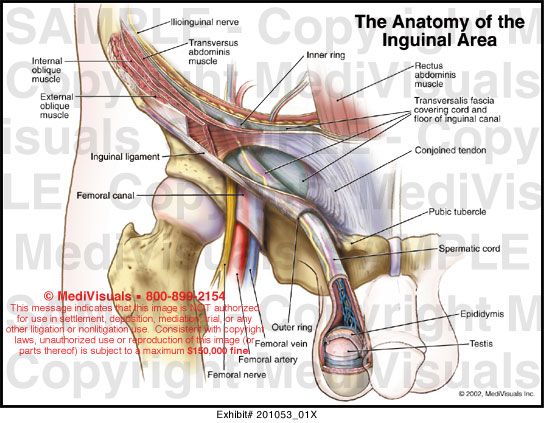 Since the hair in the bikini area of men is coarser, and the vegetation is more intense, it is not always advisable to use a razor. Using a razor will not completely get rid of vegetation, hair growth will not stop, and there is always a danger of getting irritated or cut.
Since the hair in the bikini area of men is coarser, and the vegetation is more intense, it is not always advisable to use a razor. Using a razor will not completely get rid of vegetation, hair growth will not stop, and there is always a danger of getting irritated or cut.
Men’s epilation of intimate areas with modern methods provides complete smoothness of the skin for up to three weeks. At the same time, the vegetation is reduced, and the hair does not grow in as after shaving.
Methods for male epilation of intimate areas
Today, cosmetologists offer the following methods for getting rid of hair in the bikini area:
• Waxing. In this case, the hair is removed using a special cosmetic warm wax against the direction of hair growth. The master uses special non-woven strips to remove the composition.
• Men’s waxing. Soft, slightly warmed sugar paste is used. Hair is removed in the direction of its growth, which eliminates their ingrowth into the skin.
• Skin’s polymer depilation. With the help of a special viscous composition, the hair is easily removed from the skin. The technique eliminates the occurrence of burns and other injuries. Skins – epilation can be performed even on short hairs.
Types of male epilation of intimate areas
Depending on the preferences of a man, the master can choose the optimal hair removal scheme:
• Total deep bikini with treatment of intergluteal cavities;
• Classic bikini with pubic treatment;
• Neat intimate haircut.
In many cases it is advisable to use a thick sugar paste rather than wax for male hair removal. It is she who captures hard hair in the best way, without breaking it off in the root zone.
How do I prepare for male intimate area waxing?
Experts recommend following these guidelines before your upcoming wax or sugar depilation:
• Do not shave your hair. The razor can provoke excessive growth of hard hair, infection, irritation, cuts;
• Do not expose the skin to prolonged sun exposure;
• Make hair 1-1. 5 cm long;
5 cm long;
• Take a warm shower a few hours before the procedure.
Contraindications for male epilation of intimate areas
Absolute contraindications are:
• Any damage to the skin;
• Diabetes of any type;
• Low pain threshold;
• Predisposition to allergies and edema;
• Neoplasms on the skin;
• Acute infections.
Skin care after epilation of intimate areas
It is very easy to care for the skin and prolong the effect of depilation in the bikini area:
• In the first days, treat the skin with an antiseptic;
• Avoid any thermal effects on the treatment area;
• Use skin care creams and lotions;
• Do not shave between total hair removal treatments;
• Avoid untested and aggressive cosmetics;
• Use a scrub to exfoliate dead skin.
Does it hurt?
Men’s epilation of intimate areas usually does not cause strong discomfort, passes quickly and almost painlessly.:background_color(FFFFFF):format(jpeg)/images/library/12293/structure-of-inguinal-canal_portuguese.jpg)

 See here for more information.
See here for more information. 1 Pampiniform Plexus
1 Pampiniform Plexus